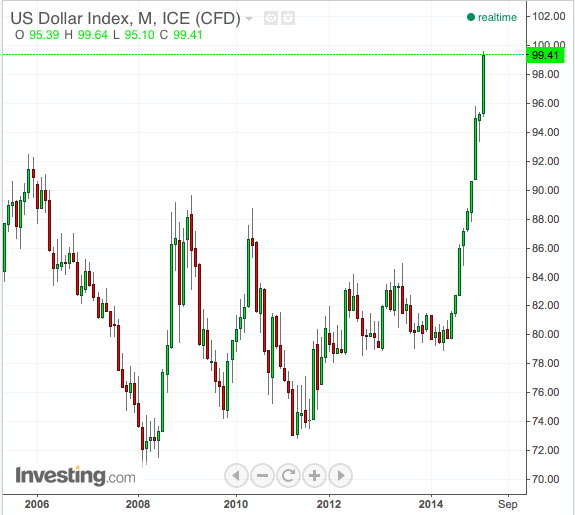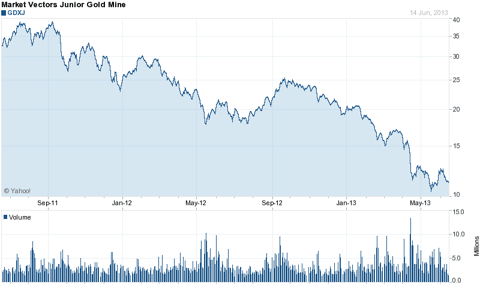Finding Undervalued Gold Miners With Low Pro
Post on: 24 Июль, 2015 No Comment

Published 06/29/2011 — 11:00 *Originally published on StreetAuthority.com and re-published with permission.
By Steven Orlowski
Gold, gold, gold it seems everyone wants to talk about gold, and for good reason. Since 1999, the price of an ounce of gold is up more than 600%, from about $250 to more than $1,500. Many investors, me included, wish we’d have purchased more gold at lower prices back when we could.
Despite the fact that gold is trading near $1,500 an ounce, there are many investors and analysts who are still bullish, including yours truly.
That being said, the downside for goldis much greater at the current lofty price than it was at $500 or $1,000 an ounce. But the opportunity does exist to get into the gold market at lower prices than gold trades at today, even as low as $134 an ounce.
How? You can buy stocks of gold mining companies.
So far in 2011, shares of gold mining companies have lagged the price of gold. And this has created an opportunity. The following chart compares two exchange-traded funds (ETFs): the Market Vectors Gold Miners ETF (NYSE: GDX ) to the SPDR Gold Trust (NYSE: GLD ). GDX, the dark blue line, is a basket of gold mining companies and GLD tracks the price of gold.
282%29.gif /%
Consider Yamana Gold (NYSE: AUY ). Yamana Gold is one of the most commonly held gold miners. It currently has a market capitalization of $8.48 billion and has 22.1 million ounces of gold reserves. If you use these two figures to estimate the value of the company, you can get some pretty interesting results. By dividing the market capitalization of the company by the number of ounces of gold reserves, the result is the cost per ounce of gold you pay for buying the company’s stock.
In Yamana’s case we get $8.48 billion / 22.1 million = $383.71 per ounce of gold. That’s certainly cheaper than paying $1,500 per ounce of gold today.
Here’s a list of miners and their respective values in cost per ounce of gold:
Based on this calculation, there is quite a bit of value in these companies and a significant difference in the cost per ounce of gold between them: from $624.79 per ounce for Goldcorp (NYSE: GG ) down to $134.16 per ounce for Gold Fields (NYSE: GFI ). This huge disparity is attributable to variables including the time and cost involved in extracting the gold from the ground and the future cash flow. There is also risk involved with having operations in countries with unstable political and economic environments. This can impact the success and profitability of each company’s endeavors. But these factors also create the opportunity to buy into the gold market at deep discounts to the current market price.
This is not the only consideration before investing in mining company shares. For example, the price of gold has held its own this year, but gold miners’ share prices have fallen appreciably. Many of the big miners have been utilizing a gold hedging strategy intended to protect from falling prices but which actually prevented them from benefiting from higher gold prices.

Some companies have fared better than others. Gold Fields Limited is one of the world’s largest unhedged gold producers, with operating mines in South Africa, Ghana, and Australia. The $10.3 billion company is expected to earn $1.32 per share this year and $1.76 in 2012, which would represent 59% and 33% year-over-year EPS growth, respectively. This should help drive the share price higher.
Action to Take —> Invest in gold mining shares. I’ve made the case for higher gold prices in the past. It is my firm conviction that gold miners’ underperformance relative to the price of gold positions the sector to appreciate considerably in the not so distant future.
One option for investors is to buy individual shares of companies like Gold Fields. But remember to diversify and do your homework. Some of these stocks will perform better than others, so make sure you know why you’re buying the ones you do.
Another way to take advantage of the disparity between the value of gold miners’ reserves and the market price of gold is to invest in gold miner ETFs. The two I like are the Market Vectors Gold Miners ETF and the Market Vectors Junior Gold Miners ETF (PCX: GDXJ) .
GDX owns shares in established gold miners like the ones listed above, while GDXJ invests in Junior Miners. Juniors are generally very small mining companies still in the exploration phase. This means they are digging where they think they’ll find gold, but don’t currently have much in the way of proven reserves. Individual junior stocks often trade for less than $1 per share and oftentimes for pennies a share. When they strike gold the shares have been known skyrocket immediately after a confirmed discovery. On the flip side many junior miners never strike gold and go bust. Both ETFs provide investors with the ability to invest in gold miners without taking on company-specific risk, while still participating in the appreciation potential of the gold mining sector.
Disclosure: Neither Steven Orlowski nor StreetAuthority, LLC hold positions in any securities mentioned in this article.
For more information on gold and metals, go to StreetAuthority.com














